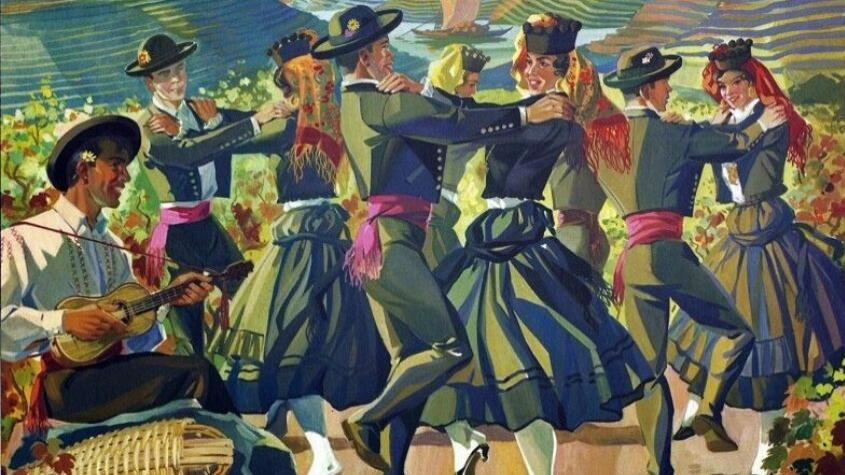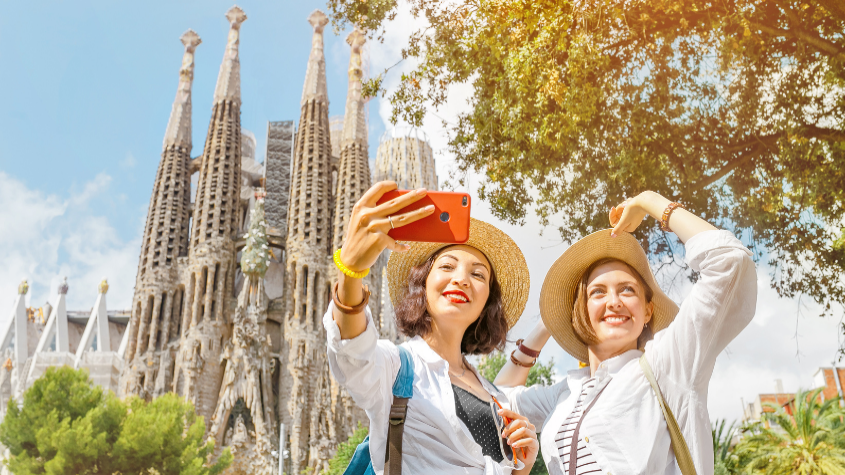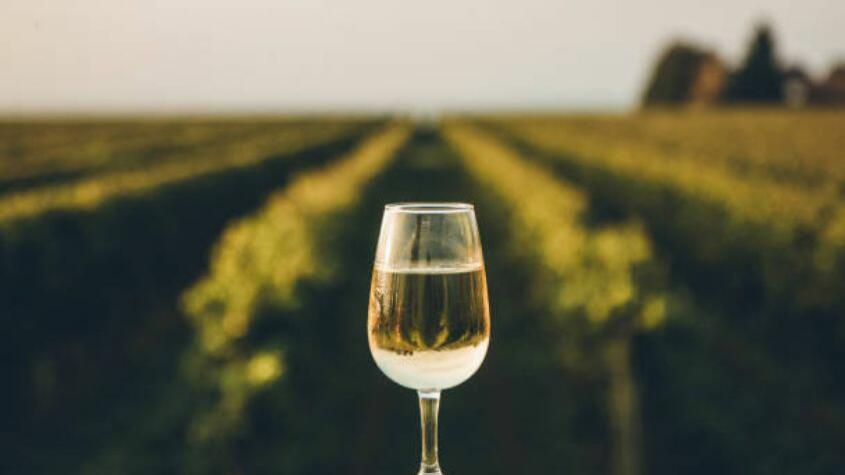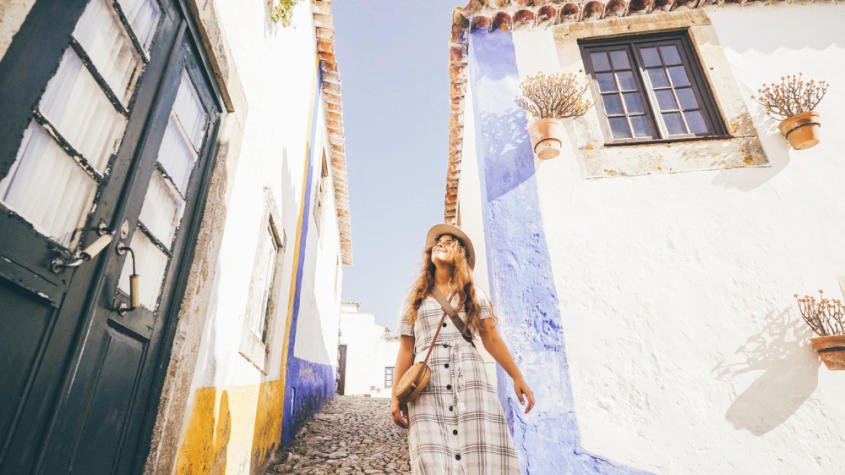
Discovering the Historical and Cultural Douro
In the north of Portugal, between picturesque valleys and showy vineyards, lies the Douro. Visited by tourists from all over the world, this region is known for producing exceptional wines. However, the Douro is a true center of historical and cultural wealth.
Come and discover it with us.
World Heritage: The Fascinating Cultural Landscape of the Douro Valley

Considered a UNESCO World Heritage Site, the Douro is a true natural and human masterpiece.
Known for its stunning cultural landscape, marked by steep slopes, terraces and countless vineyards, it is considered by many to be the ideal place for all lovers of nature, history, and culture.
It was thanks to the combination of geographical factors and human ingenuity that the Douro region was named a UNESCO World Heritage Site in 2001.
This international recognition was very important for the economic and tourist growth of the region, making it one of the most visited and prestigious places in Portugal.
Centenary Vineyards: A Journey through Traditional Wineries

Located on the steep slopes of the Douro, the Traditional Wineries of the Douro represent the historical and cultural richness of wine-growing in this region and are responsible for the process of producing fantastic port wines.
It is on these estates that the entire wine production process takes place, from hand-picking the grapes to the traditional foot treading in the lagares.
As well as producing wine, these estates also run wine-making activities for tourists from all over the world. These activities usually include exquisite wine tastings, pleasant walks through the vineyards and the opportunity to take part in the region's more festive activities, such as the grape harvest.
Some examples of these wonderful estates are Quinta da Avessada, Quinta do Tedo and Quinta de São Luiz.
A visit to a traditional Douro estate is the ideal opportunity to experience the love of viticulture and oenological heritage in idyllic settings.
Winemaking Traditions: The Art of Growing and Producing Wine in the Region

With more than 30,000 winegrowers and a wine-growing area of around 40,000 hectares, the Douro is known nationally and worldwide for its fantastic Port wine production.
As well as being known for its strong wine production capacity, the Douro is also famous for its cultural landscape, which is a true testament to human ingenuity and the strong link between nature and culture.
The know-how of wine production is essential to understanding the identity of the people and the Douro region.
History of the Rabelo Boats: Navigating the Waters of the Douro River

Did you know that rabelo boats played a key role in transporting wine from the Douro port to the wine cellars in Vila Nova de Gaia?
It all began in the 18th century, when Douro wine producers realized that the Douro River was the ideal place to transport port wines.
This led to the construction of sturdy boats called Barcos Rabelos (Rabelo Boats). Rabelo boats were designed to survive the fast currents of the river Douro. Thus, they were created with a flat bottom that was built using overlapping planks.
Generally, these vessels would be between 19 and 23 meters long and could carry up to 100 barrels.

Initially, these vessels were built with pinions and powered by sails, but with technological advances and the invention of the steam engine, this transportation became faster and more efficient.
The era of the Rabelo boats reached its peak in the 19th century when port wines were most commercialized and dignified.
With the construction of the first Douro railway line completed in 1887 and the development of road communications, there was a decline in the use of the Barcos Rabelos. However, these typical Portuguese boats have remained national symbols of the Douro's historical and cultural heritage and are currently preserved as tourist attractions.
This way, you can take advantage of the 1-hour Rabelo Boat Tour of the Douro or, for those who prefer to experience this a little longer, you can take a 2-hour tour.
Douro Gastronomy: Flavors that tell a Story

The gastronomy of the Douro is a truly delightful journey through the different flavors that reflect the diversity of the region's landscape and the various local products.
Each sub-region of the Douro contributes to the tasty gastronomic spectacle of the Douro.
The Cima Corgo is a true celebration of intense flavors and exuberant aromas.
At the table, the delicious Bacalhau à Brás, seasoned with the tasty Douro olive oil and small pieces of garlic, stands out; the meat dishes, well seasoned and with exuberant flavors, demonstrate the strong connection of Douro gastronomy to the land.
And of course, we couldn't forget the main course, the delicious and succulent olives, seasoned with the wonderful local olive oils, and the tasty sausages, such as hams and chorizos, which complete the taste experience.
In Baixo Corgo, where the Atlantic breeze is more prominent, there is a greater preference for comforting and cozy dishes, such as the appetizing "posta transmontana", which highlights the regional flavors of the Douro. Here, the tasty fish caught in the river stands out, with grilled trout and the typical octopus rice highlighting the sophisticated river aromas.
Local agricultural products are used to flavor these delicious dishes, such as tomatoes and peppers picked from small gardens, which add vibrant colors and distinct flavors to these wonderful dishes accompanied by tasty young wines.

In the Douro Superior, with its more rugged landscape, intense flavors and wild aromas predominate.
Particularly noteworthy are the exuberant meat dishes, marked by their high level of succulence, such as the famous lamb, whose secret seasoning lies in the aromatic herbs that grow on the slopes of the Douro countryside.
This sub-region is also known for its tasty desserts made with local products such as figs and almonds.
In general, the gastronomy of the Douro is a true testament to the intimate relationship between the local population, the land, and the climate, creating an authentic and unforgettable gastronomic experience for all those who visit the Douro.
Wine Architecture: Manor Houses and Solares in the Valley

On the steep slopes of the Douro, close to the banks of the river, the manor houses and solares of the Douro rise grandly.
Spectators of the passage of time, these centuries-old properties rich in history and culture shape the authentic landscape of the Douro.
Many of these centuries-old houses were built in times of plenty. This allowed for the construction of great architectural masterpieces, characterized by a combination of Baroque and Neoclassical architectural styles. The vast gardens of these houses stand out, with centuries-old trees, rose bushes and flower beds that embellish these spaces even more.
The interior of these spaces is a real journey back in time. Here, the old halls stand out, decorated with carved furniture and various antiques.
Visiting these architectural masterpieces is an opportunity to immerse yourself in the winemaking tradition and the historical and cultural heritage of these charming places.
For all those interested in experiencing this unforgettable experience, there are countless centuries-old houses to visit.
However, a centuries-old house that stands out in the Douro is the Secular House of Fernão Magalhães, the Portuguese navigator who led the first Circum-Navigation expedition around the globe. Located in Sabrosa, this is a must-see for anyone visiting the Douro. It is believed that this was the house where the navigator was born.
Festivals and Celebrations: The Festive Spirit of the Douro - Harvest

As well as being known for its fantastic landscapes, the Douro is also famous for its cultural and historical richness.
Numerous agricultural festivals and rituals take place in the region throughout the year. They are characterized by celebrations and festivities that pay homage to the strong connection between local people and the land that shapes the Douro landscape.
These celebrations are dominated by colorful parades, traditional music, typical dances such as folklore and farmers' markets, which highlight the region's agricultural products. There are also educational and cultural events such as talks and workshops.
Some examples of these festivities are: the São João da Pesqueira Festival; the Nossa Senhora dos Remédios Festival and the São Vicente Festival in Lamego;
In Miranda do Douro, during the winter, the so-called solstitial festivals are celebrated, known in the region as cultural rituals.
These festivities are highlighted by the so-called Pauliteiros from Miranda, who fascinate all who visit this beautiful place with their traditional dances.
And of course, we couldn't forget the Harvest Season, which takes place between September and October and is the most important time for the region, marked by oenological activities, festivals, and special events.
Illustrious Characters: Figures who mark the History of the Douro

Over the years, several illustrious figures from literature and history have contributed to shaping the cultural landscape of the Douro. These notable personalities have become essential to the region's history.
A very illustrious figure for the Douro was undoubtedly the Marquis of Pombal. It was on September 10, 1756, that Sebastião José de Carvalho created the Companhia Geral da Agricultura dos Vinhos do Alto Douro, which contributed to the creation of the world's oldest demarcated region, the Douro DOC.
Fernão de Magalhães, a remarkable Portuguese navigator who in the 19th century became well known for his expedition, the Circum-Navigation of the Globe. In this way, his name became associated with the Manor House of Fernão Magalhães.
Another notable figure was D. Antónia Adelaide Ferreira, also known as Ferreirinha, who led the famous Casa Ferreirinha, a producer of exceptional wines in the Douro, in the 19th century.

The Englishman, Joseph James Forrester, was also a very important figure for the region, as he was a wine producer and defender of the rights of Douro winegrowers.
On a literary level, the great Portuguese writer, Eça de Queiroz, who despite not being born in the Douro, immortalized the region in his well-known work "A Cidade e as Serras" (The City and the Mountains).
Also, Adolfo Correia Rocha, who was originally from the Douro, one of the most influential Portuguese writers of modern times, made several references to the Douro region in his poems and other books. You may know him by the pseudonym that made him famous, Miguel Torga.

A visit to the Douro is a truly unforgettable experience that will immerse you in the Douro's cultural and historical richness. It is an invitation to taste the delicious wines produced here and to learn about the ancestral and local heritage of this beautiful place.
If you're curious to get to know this wonderful region, explore the Top 10 activities not to be missed in the Douro and discover why the Douro Valley is ideal for wine lovers.
Visit the Douro, and explore the tours, activities and cruises selected for you.
Visit Living Tours for more travel experiences in Portugal and Spain. And explore more travel ideas on the Living Magazine Blog.
Did you like it?
Average votes: 4.66 of 5
Go Back to the Blog














